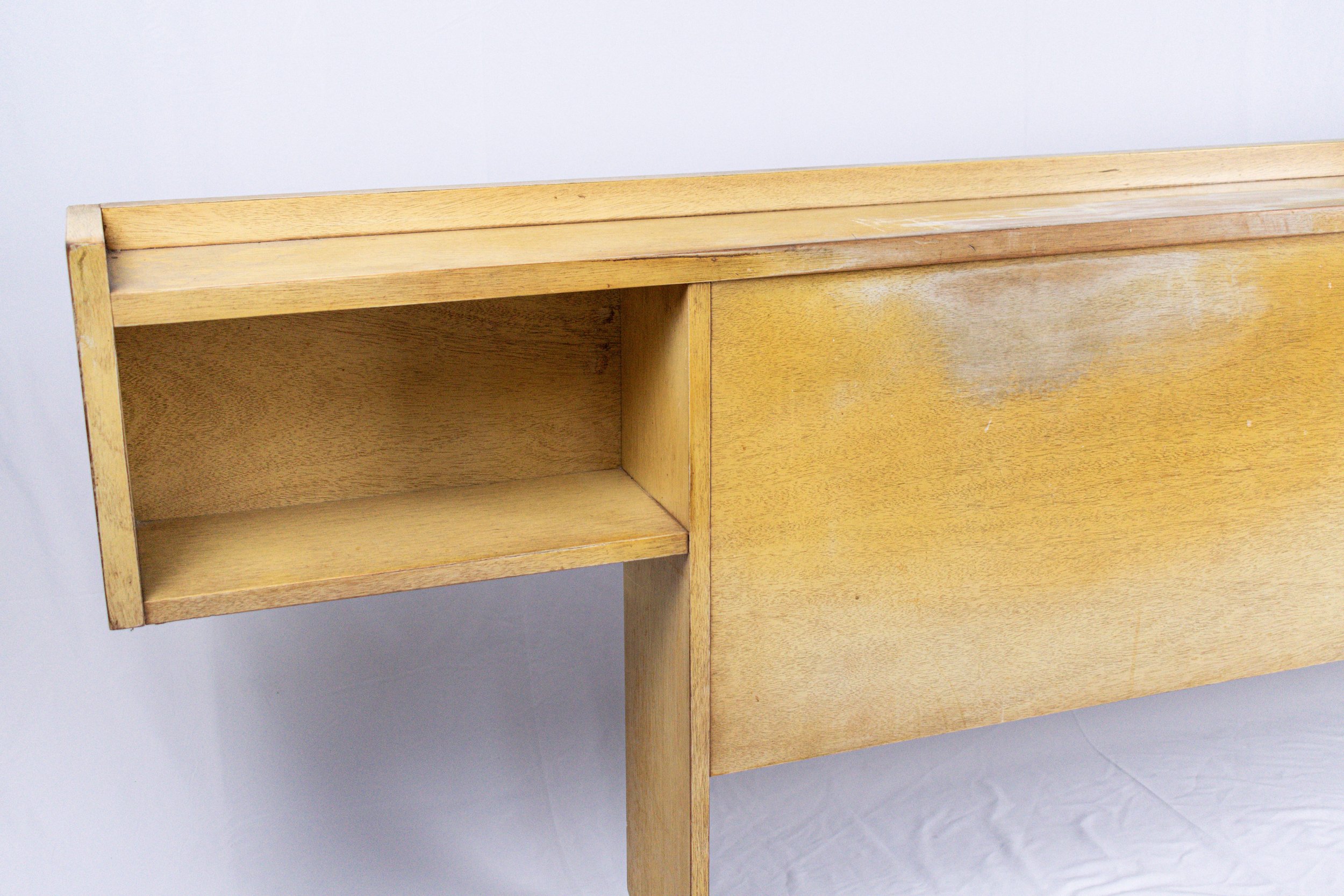Restoring Bleached Mahogany Mid-Century Furniture
Bleached mahogany mid-century furniture holds a unique charm that resonates with enthusiasts of this iconic era. The soft, pale hues and delicate grains of bleached mahogany exude a sense of understated elegance. Over time, these vintage pieces may show signs of wear, requiring some restoration to bring them back to their former glory.
In this article, we'll explore the art of restoring bleached mahogany mid-century furniture. From understanding the characteristics of bleached mahogany to restoration techniques and maintenance tips, we'll guide you through the process of renewing the timeless appeal of these iconic pieces.
Understanding Bleached Mahogany
Bleached mahogany furniture is characterized by its light, almost blonde, appearance. This unique finish is achieved through a bleaching process that removes the natural reddish-brown color of mahogany. The result is a softer, more neutral palette that complements mid-century modern aesthetics.
Assessing Restoration Needs
Before embarking on the restoration journey, it's essential to assess the condition of your bleached mahogany furniture. Inspect the piece for any visible damage, such as scratches, stains, or watermarks. Take note of loose joints, missing hardware, or any structural issues that require attention.
Cleaning and Surface Preparation
Start the restoration process by gently cleaning the furniture. Use a mild wood cleaner or a mixture of water and a few drops of dish soap. Avoid abrasive cleaners that can damage the delicate surface of bleached mahogany. Wipe the piece clean with a soft, lint-free cloth.
Repairing Minor Damage
For minor scratches or surface imperfections, consider using a fine-grade steel wool to gently buff out the blemishes. Follow the wood grain pattern to avoid creating new scratches. If the damage is more extensive, consult a professional restorer to ensure proper repair.
Restoring the Finish
Restoring the bleached mahogany finish is a crucial step in revitalizing these vintage pieces. Begin by sanding the surface lightly with fine-grit sandpaper (usually 220 grit or higher). Sanding helps remove any surface imperfections and prepares the wood for refinishing.
Choosing the Right Finish
Select a finish that complements the bleached mahogany's natural beauty. Clear lacquer or polyurethane finishes are excellent choices as they provide a protective layer while preserving the wood's color. Apply the finish in thin, even coats, allowing each coat to dry completely before applying the next.
Preserving Hardware and Details
Mid-century furniture often features unique hardware and intricate details that contribute to its character. When restoring bleached mahogany pieces, take care to preserve these elements. Remove hardware before refinishing and consider cleaning or polishing them separately.
Final Touches and Maintenance
Once the restoration is complete, take the time to admire your renewed bleached mahogany mid-century furniture. Regularly dust and clean the piece with a soft, damp cloth to prevent dust buildup. Avoid placing the furniture in direct sunlight, as prolonged exposure can cause the wood to fade.
Consulting Professionals
While DIY restoration can be rewarding, some restoration tasks may require the expertise of a professional. If you're uncertain about any aspect of the restoration process or if your piece has significant damage, consider consulting a professional furniture restorer.
Preserving Timeless Beauty
Bleached mahogany mid-century furniture embodies the elegance of a bygone era. Restoring these iconic pieces allows us to continue enjoying their beauty and functionality for years to come. Whether you're an avid collector or a homeowner with a cherished bleached mahogany gem, the art of restoration ensures that these treasures remain timeless and cherished for generations.
About the Authors
Jamie and Lyle are mid-century modern aficionados at Plaidsmith.com, dedicated to guiding enthusiasts on their MCM journey. With over ten years of hands-on experience, they provide valuable insights to those seeking to learn more about the mid-century modern movement, mid-century modern furniture, and anything mid-century modern design.
Through careful research, they share their in-depth knowledge and historical context, ensuring everyone has access to learn about mid-century modern design. On their blog, www.plaidsmith.com/mid-century-modern, they aggregate facts from historical newspapers and journals, books, vintage catalogs, and more to help tell the stories of makers, designers, and styles. Their expertise covers modern mid-century topics, including iconic designers, classic pieces, restoration techniques, and design trends. Their commitment to authenticity and passion for MCM design shines through in every aspect of their work.
Jamie and Lyle have successfully sourced and restored rare MCM gems from auctions, thrift shops, Craigslist, and all over, making them trusted authorities in the field. They continually expand their expertise to stay at the forefront of modern mid-century design. They have immersed themselves in mid-century modern culture as dedicated professionals. They deeply respect the timeless beauty and cultural significance of this era.
Jamie and Lyle enjoy exploring auctions, learning new restoration techniques, finding vintage catalogs, and playing with their pups outside their MCM pursuits. Their enthusiasm for mid-century modern design extends beyond their work, making them true ambassadors of this iconic era.
About the Authors
Jamie and Lyle, MCM enthusiasts at Plaidsmith.com, offer hands-on experience and expert insights into mid-century modern design. They curate authentic pieces, share historical context, and guide clients to make informed choices. Their expertise spans iconic designers, restoration techniques, and trends. Trusted authorities in the field continually expand their knowledge to stay at the forefront of MCM. Beyond work, they explore auctions, learn restoration techniques, and enjoy vintage catalogs, embodying their passion for mid-century modern design.




